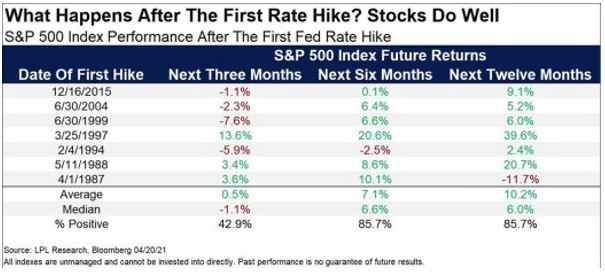Dear Friends,
For the past several months, the Federal Reserve Board members has done its best to dampen fears of inflation currently circulating amongst the financial media and the public. Chairman Powell reinforced the Fed’s expectation of “transitory” inflation during its recent FOMC (Federal Open Market Committee) meeting, citing that long-term inflation expectations remain within the goal range of 2-2.5%.
Although the Fed emphasized that drastic measures will not be needed to control inflation, the sentiment following the meeting was a Hawkish Fed that may need to pursue rate hikes slightly earlier than expected. The widely accepted projection earlier this year was no rate increases until at least 2023, but several institutions (including JP Morgan Chase and Goldman Sachs) are now beginning to speculate that we may see rate hikes in late 2022. This change comes following unexpected increases of consumer prices of +3.4% YOY. These price increases have been accelerated a surge in demand and by supply shortages in many industries (as supply chains remain under heavy pressure following the Pandemic).
In the short term, the Fed is still committed to its accommodative policy of low rates to ensure the economy continues its strong recovery. They remain focused on normalizing the unemployment rate and stoking economic growth that would be hindered by any rate increases.
Equity Markets
By some measures, rising interest rates hurt equity markets, especially the stocks of “growth” companies. However, LPL Financial reviewed historical data related to rate hikes and found that stocks have actually had strong mid & long-term performance following the initial rate increase in an increasing rate environment. To illustrate, according to the chart below the average 12-month return of the S&P 500 after the first rate hike of a cycle is 10.2%.
Please see the table below which shows the 3, 6 and 12-month performance of the S&P 500 following the “first-rate hike” in a given cycle.
To conclude, the Fed is currently facing a balancing act of 1) keeping rates low to support the nascent economic recovery and 2) pursuing eventual rate hikes to get inflation under control. Accordingly, at Taylor Financial Group we remain overweight equities (balanced between Growth & Value) and underweight fixed income, especially US Treasuries and other Government-backed securities.
Please reach out if you have any questions!
Debbie


